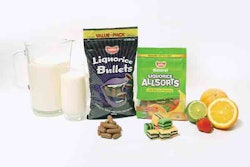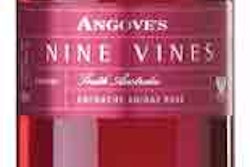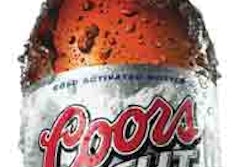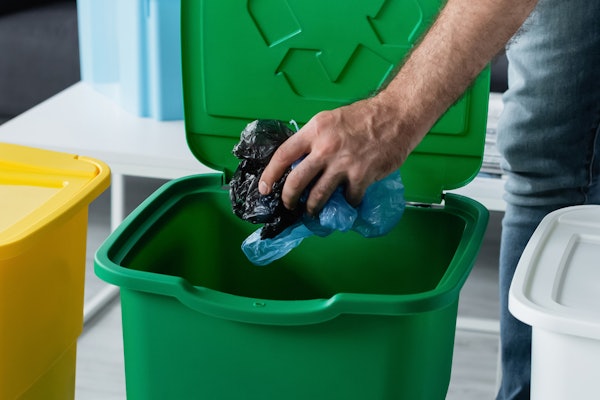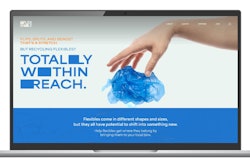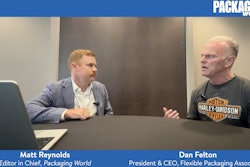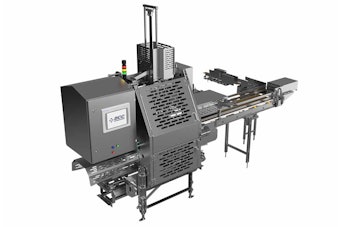There are 3 criteria for a low-acid packaged product to be considered aseptic. A) The product must be commercially sterilized before it is filled into the container. B) The environment in which the product is filled must be commercially sterilized, basically like a sterile operating room. C) The container must be commercially sterilized before the products are filled. Criteria A and B are relatively easy to achieve...the real challenge is C.
Low acid products have been packaged aseptically for many years in the US in metal cans. Examples would be cheese sauce in #10 cans and low acid diet drinks like Slim Fast in 12 ounce cans. Prior to filling the product into the containers, the cans are flushed with superheated steam for sufficient time in order to sufficiently kill organisms of public health significance (e.g., C. botulinum and B. cereus). Metal cans, of course, can tolerate superheated steam quite well. But a conventional PET bottle cannot. As heat cannot be used to commercialize the PET bottles, some other technique must be used in order to ensure they are commercially sterilized.
Though a variety of techniques—including such things as irradiation—have been experimented with, the major viable option today is chemical sterilants. Paracetic acid is a chemical sterilant that has been used for sterilizing PET bottles for many years throughout Europe and other parts of the world. For example, Nestlé has aseptically packaged its Nesquik line of flavored milk products in PET bottles for several years in France and other parts of Europe using paracetic acid. To make a long story short, in the U.S. the Food and Drug Administration was concerned that paracetic acid might not be able to sufficiently eliminate B. cereus if it was present. The FDA was so concerned about plant contamination that it wouldn’t even allow B. cereus to be introduced into beverage plants to test that it could be sufficiently eliminated. What finally seemingly convinced the FDA was the commercial development of non-toxigenic surrogates that simulate
B. cereus. In fact we can thank two companies for successfully commercializing these nontoxigenic surrogates for this application: Ecolab and FMC. In addition to the FDA, the federal EPA allowed the use of the non-toxigenic sterilants in the U.S. for these applications.
As of the writing of this article, the major step left is for a line to be validated by the FDA and for the state EPA (where the line is installed) to allow for the use and effective disposal of these chemicals. One paracetic acid aseptic filling line is installed in California and it is believed that it will be validated within the second or third quarter of 2007. Once that happens, and we feel confident that it will, the state EPA guidelines will most likely be met shortly and we will finally see the first commercially available low acid aseptically processed beverage products in the U.S. in PET bottles. We do not know which product will be the first. There will be many applications suitable to this technology, including dairy-based beverages (e.g., chocolate milk, smoothies,
milk-based coffee drinks, etc.), unsweetened green tea (which is a low-acid product) and a number of other products. (There is another sterilant that may have potential in the U.S., hydrogen peroxide, but for now the spot light is clearly on paracetic acid.)
Marketers will have to be savvy in effectively marketing these types of products to consumers. Chocolate-flavored milk and smoothies may still need to be refrigerated to be sold to consumers who want to drink them chilled on the spot. The overall potential cost savings that can be realized by manufacturers will be huge. It is difficult to determine how significant this development will be. The Japanese have been aseptically processing and packaging low-acid beverages such as green tea in PET bottles for many years, and it has been very successful. Rest assured this technology will have a major impact on the U.S. beverage processing landscape. Keep an eye out for it!
Barry Goldberg
is president of TAPPA Group International, an international marketing consulting firm. David Johnson is managing director of Strategic Development and Effective Business Support, a UK marketing consultancy that is TAPPA’s European affiliate. TAPPA can be reached at [email protected].


